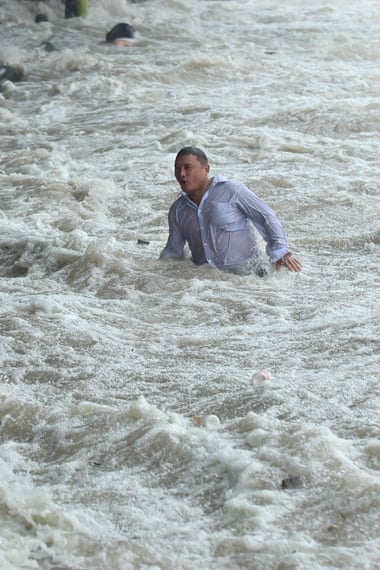The Guardian - Larry Elliott
Bank of England governor tells Lloyd’s insurers that ‘challenges currently posed by climate change pale in significance compared with what might come’
Mark Carney, the governor of the Bank of England, has warned that climate change will lead to financial crises and falling living standards unless the world’s leading countries do more to ensure that their companies come clean about their current and future carbon emissions.
In a speech to the insurance market Lloyd’s of London on Tuesday, Carney said insurers were heavily exposed to climate change risks and that time was running out to deal with global warming.
The governor said that proposals would probably be put to the G20 meeting in Turkey in November urging the world’s leading developed and developing countries to bring in tougher corporate disclosure standards so that investors could better judge climate change risks.
“The challenges currently posed by climate change pale in significance compared with what might come,” Carney said. “The far-sighted amongst you are anticipating broader global impacts on property, migration and political stability, as well as food and water security. So why isn’t more being done to address it?”
Carney added that there was a growing evidence of humans’ role in climate change, noting that since the 1980s the number of registered weather-related loss events had tripled. Inflation-adjusted losses for the insurance industry had increased five fold to $50bn (£33bn) a year.
France will host the latest global attempt to combat climate change at a summit in December, and Carney added to the pressure for action by pointing to the threats to “financial resilience and longer-term prosperity. While there is still time to act, the window of opportunity is finite and shrinking”.
The governor, who is chairman of the Financial Stability Board, the international body set up by the G20 in 2009 to monitor risks to the financial system, said losses would be higher than expected if recent weather events proved to be the new normal.
 |
| A man by the Qiantang river after Typhoon Dujuan hit China. Claims for flood damage could affect financial stability. Photograph: Imaginechina/Rex Shutterstock |
“The horizon for monetary policy extends out to two to three years. For financial stability it is a bit longer, but typically only to the outer boundaries of the credit cycle – about a decade. In other words, once climate change becomes a defining issue for financial stability, it may already be too late.”
Carney said there were three ways in which climate change could affect financial stability: physical risks, such as claims from floods and storms; liability risks that could arise if those suffering climate change losses sought compensation from those they held responsible; and transition risks caused by the revaluation of assets caused by the adjustment to a lower-carbon economy.
The governor said that global action to tackle climate change could have a profound impact on companies if their business models were challenged by the move away from fossil fuels.
“Take, for example, the International Panel on Climate Change’s estimate of a carbon budget that would likely limit global temperature rises to 2 degrees [centigrade] above pre-industrial levels.
“That budget amounts to between a fifth and a third of the world’s proven reserves of oil, gas and coal. If that estimate is even approximately correct it would render the vast majority of reserves “stranded” – oil, gas and coal that will be literally unusable without expensive carbon-capture technology, which itself alters fossil fuel economics.
“The exposure of UK investors, including insurance companies, to these shifts is potentially huge.”
Carney said that, following a meeting in London last week, the FSB was “considering recommending to the G20 summit that more be done to develop consistent, comparable, reliable and clear disclosure around the carbon intensity of different assets”.
One proposal, he added, was the creation of an industry-led group, a climate disclosure taskforce, to design and deliver a voluntary standard for disclosure by those companies that produce or emit carbon.
“Companies would disclose not only what they are emitting today, but how they plan their transition to the net-zero world of the future. The G20 – whose member states account for around 85% of global emissions – has a unique ability to make this possible.”
Fairfax Video
RAW VIDEO: Bank of England governor Mark Carney warns "climate change threatens financial resilience and longer term prosperity."

